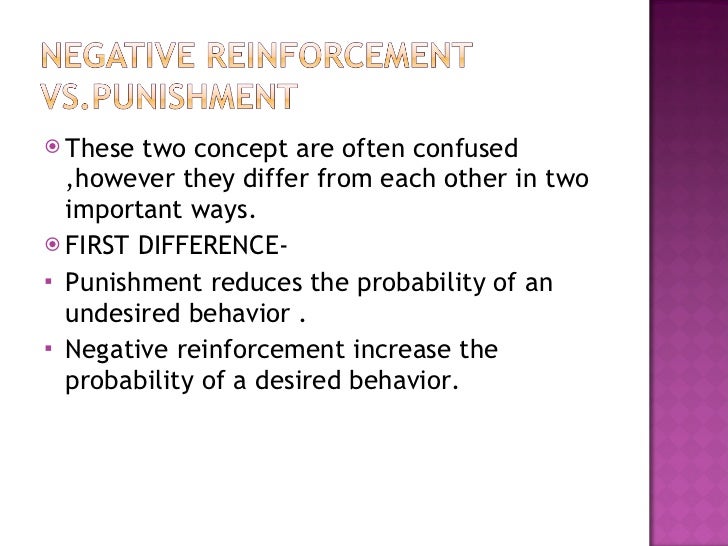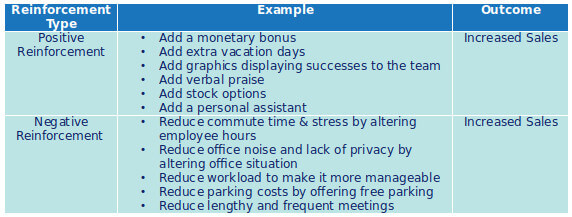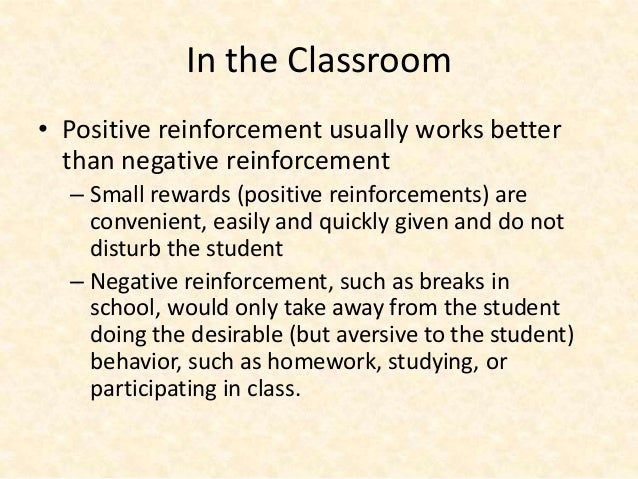- Using Negative Reinforcement In The Classroom
- Negative Reinforcement In The Classroom
- Effects Of Negative Reinforcement In The Classroom
Classroom management can be a very challenging part of teaching. Keeping 20-30 students calm, engaged, and motivated to learn is no easy feat! For optimal learning, it is necessary for the teacher to have the student’s behavior under control. It is also important for students to be given clear expectations so they know exactly what behaviors are expected in the classroom. Just as the principles of reinforcement and punishment can be utilized in the home, they can also be used to help with the management of behaviors at school.
Negative reinforcement, which is frequently confused with punishment, may be psychology’s most often misunderstood concept. Robert Tauber provides a classroom exercise to teach the distinction between negative reinforcement and punishment. The reinforcement technique is often used in schools for classroom management. Whether it is positive or negative reinforcement, school authorities and others all around the world, from families to corporates, use this technique to get the expected behavior from people. Here are some classic negative reinforcement examples for children and adults.
Using Reinforcement in the Classroom:
Reinforcement is a consequence following a behavior that increases the probability that the behavior will increase in the future.
One answer suggests not engaging. However, not engaging when the student wants to engage would still be punishment. Negative reinforcement means to encourage behaviour by removing an aversive circumstance. An example would be an addict taking anot. Negative reinforcement occurs when something already present is removed (taken away) as a result of a behaviour and the behaviour that led to this removal will increase in the future because it created a favourable outcome.
In addition to keeping behavior under control, reinforcement in the classroom should be used to keep students engaged and motivated to learn. Teachers should use reinforcement often in order to maintain a positive learning environment and to promote appropriate classroom behaviors.
Examples of reinforcers that can be used in the classroom include the following:
- Teacher praise
- Earning privileges
- Teacher attention
- Taking away a homework assignment
- Extra recess time
- Extending a deadline
Using Punishment in the Classroom:
Punishment is a consequence following a behavior that decreases the probability that a particular behavior will occur in the future.
Punishment should be used in the classroom to decrease undesirable behaviors. Punishment in the classroom needs to be implemented with care, and should never be used to single students out or to punish behaviors that are due to a specific disability. If a particular student has challenging behaviors as a result of a disability, it is important to seek additional assistance so a behavior plan tailored to that child can be developed.
Generally, reinforcement should be the primary strategy utilized in the classroom, but if punishment is necessary, it should be the least restrictive type of punishment. Before implementing any punishment strategies, it is important to check with your school’s policy on appropriate classroom management strategies and what is and is not permitted in your specific school.
Examples of punishments that have been used in classroom include the following:
- Loss of recess time
- Extra homework
- Loss of other privileges
- Detention
Examples of more restrictive and inappropriate punishments include sending a student to a solitary time-out room and missing lunch or snack.
Many teachers use classroom-wide behavior management systems that utilize both reinforcement and punishment. These systems are very popular in many classrooms because they can be easy to implement and the students know exactly what is expected of them.
Classroom-wide behavior management systems that utilize both reinforcement and punishment:
- Stoplight Management System: A large stoplight with green, yellow, and red is placed in the classroom along with moveable buttons or clothespins with each student’s name. The students begin each day on green, but depending on their behavior can move to yellow or red. At the end of the day the students who are still on green receive some type of reward or privilege.
- Token Economy: A behavior change system where students earn tokens for engaging in specific behaviors and then at a specified time, can exchange those tokens for desired items.
- Group Contingencies: These types of contingencies occur when one consequence is delivered based on the behavior or performance of either certain students or all of the students in the classroom. There are three different types of group contingencies.
- Independent group contingency: A reward is available to all of the students in the classroom, but only students who meet the specific criteria earn the reward.
- Dependent group contingency: The reward for the entire group is dependent on the behaviors or performance of one specific student or small group.
- Interdependent group contingency: All of the students in the classroom are required to meet the specific criteria (both individually and as a group) before earning a reward.
Read our other blogs on reinforcement and punishment:
I’ve been incorporating positive reinforcement into my training more and more all the time, and I have been sharing with my students how hugely effective it is, and beneficial to your relationship with your horse.
But if you’re not – yet – ready to take the plunge and jump into reward based training, simply having a good understanding of Learning Theory, and knowing how your current methods of training fit into the theory, will make your training more precise and clear for your horse.

Learning Theory Basics
Using Negative Reinforcement In The Classroom
Learning theory is a scientific principle of how learning takes place. Learning is a result of either reinforcing the desired behaviour or punishing an undesired behaviour.
Both reinforcement and punishment can be positive or negative. In this context, positive and negative don’t mean good and bad, but instead think of them mathematically: positive means adding something, and negative means taking something away.
Positive Reinforcement, then, means you’re adding something the horse finds valuable as a reward for getting the response you were looking for. Negative reinforcement includes traditional pressure and release techniques, with an aversive stimulus being removed as a result of the correct behaviour being demonstrated.
Positive punishment involves the addition of an aversive, following an undesired behaviour, and negative punishment (which isn’t really effective in horses) would be removing something good, until the unwanted behaviour stops.
All training approaches and techniques can be explained using learning theory.
Negative Reinforcement vs Positive Punishment

In my teaching, I’ve found that people often struggle to understand the difference between negative reinforcement and positive punishment, and since they are closely linked – both making use of an aversive – it’s quite understandable.
But if we had a better understanding of the difference, hopefully when we choose to use aversives in our training we could use them more effectively.
An aversive stimulus means something your horse doesn’t like and is motivated to find a way to make it stop. It can be very minimally aversive, or a strong, scary, even painful aversive. Whenever we’re using aversives in our training, we want to be sure they are minimal – think body position, voice, and gentle tactile cues, rather than jerks, smacks or harsh equipment.
The big difference between negative reinforcement and positive punishment is the timing of when the aversive is applied. If you are teaching your horse using negative reinforcement, you apply an aversive, and remove it as soon as you get the response you want – it’s the timing of the removal that reinforces the horse and helps him learn what you’re asking him to do. In positive punishment on the other hand, the aversive is applied after a behaviour you didn’t like, to discourage it from happening again.
Least Invasive, Minimally Aversive
We want our training to be LIMA: Least Invasive, Minimally Aversive.
If we are going to use aversives, we need to both find the smallest aversive we can that will help our horse understand, and we need to commit to not escalating it.
Negative Reinforcement In The Classroom
If you apply a stimulus, and your horse doesn’t give you a response, that means he doesn’t understand. Adding a stronger aversive isn’t going to make it clearer to him, it’s just going to mean that you are switching from negative reinforcement to positive punishment, only you are punishing him for simply not understanding what you’re asking him to do. If we don’t get a response during our training attempts, instead of increasing the intensity of the cue, we need to stop and think about how to explain it to our horse another way, until we find one he understands.
Effects Of Negative Reinforcement In The Classroom
The other concern is that when we’re using an aversive, the timing of the release is critical, not only to the effectiveness of our training, but also the well-being of our horse. We have to reward the small efforts towards the bigger goal, or the horse won’t understand that he’s on the right track, and will either try different answers (some of which may be far from what we’d like him to be doing), or give up all together.
Unfortunately, this isn’t uncommon. Say you’re trying to get your horse to back up – this is an example I see too often in Miniature Horses. The handler steps in front and says Back, but the horse doesn’t know what that means yet, so they don’t move, understandably. Then the handler adds halter pressure, and the horse takes a small step back. Instead of releasing the pressure, to tell the horse they got the right answer, the handler just keeps pushing … they’ve almost got it, just keep trying! But then the horse thinks, well, backing up must’ve been the wrong answer, I have no idea what they want so I’m just going to stand here. Now we’ve activated the opposition reflex in the horse, where they just answer pressure with more pressure. The more we try to force them into the movement, the less likely they are to understand and give us the response we’re hoping for.


Who hasn’t seen a handler attempting, in vain, to shove their horse through a back or sidepass obstacle? It’s so easy to fall into the trap of trying to physically move our Miniature Horses, because they’re so small. But if we’d just use the negative reinforcement appropriately, and release when we see the small efforts towards our goal, our horse would understand what we are asking so much more quickly.
And if we combined the release of the aversive with positive reinforcement – a reward of praise, scratching, or food – then we’ve made it even more clear to our horse that they got the right answer, and they’ll be keen to try again and continue to improve on their response.

Less is More
Using positive reinforcement, it is possible to train your horse without any aversives – any pressure – at all. But if we’ve chosen to use an aversive of any kind, it’s up to us to do our best to use it correctly, with good timing and minimal aversives, so our horse understands without fear or confusion.
I don’t know about you, but I don’t want a horse who does what I’m asking solely due to fear of the consequences if he doesn’t. Training with frequent use of strong aversives creates obedience through fear, often euphemistically referred to as “respect”. Remember: respect is a human concept, and not something that a horse considers. He simply does what he’s been trained to do, and his feelings about performing that skill – and about you – will depend on the choices you make during training.